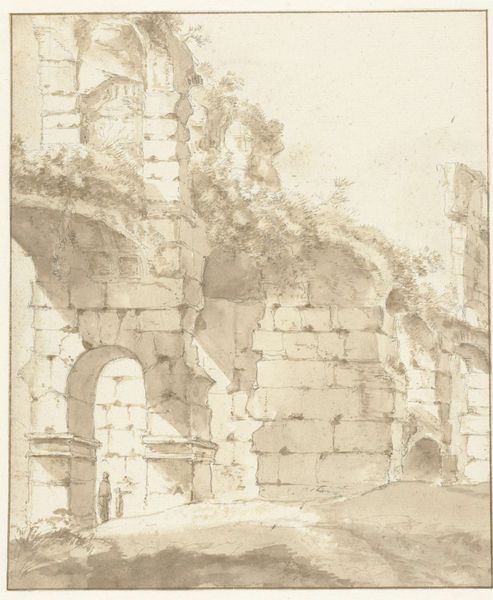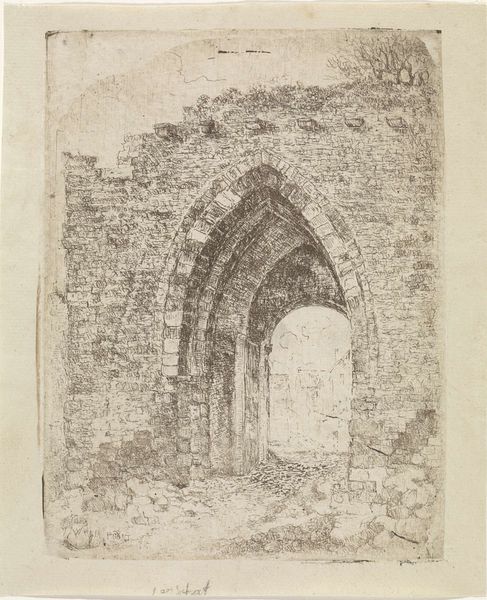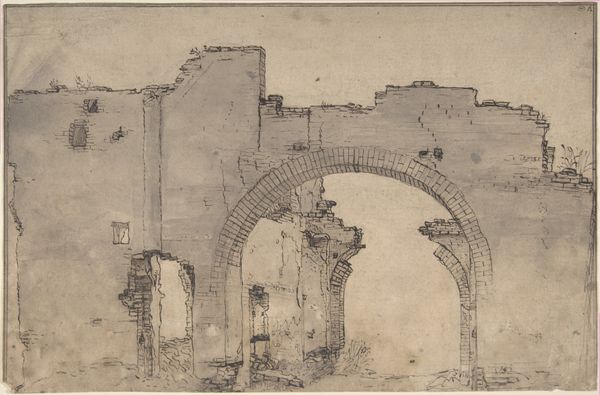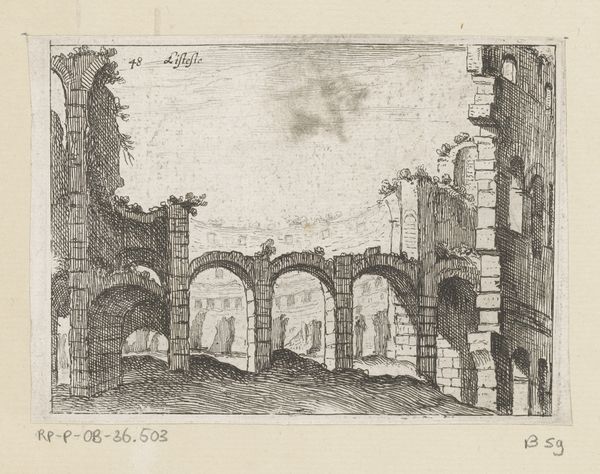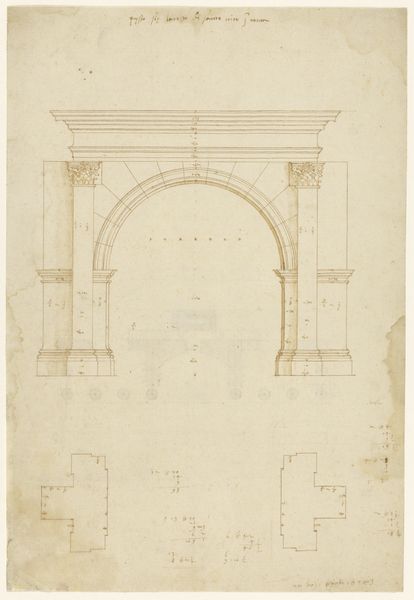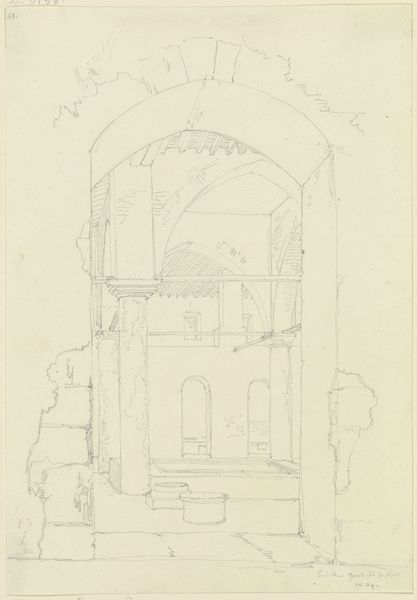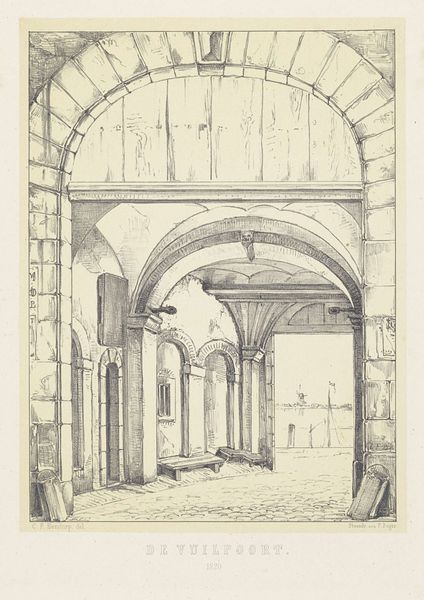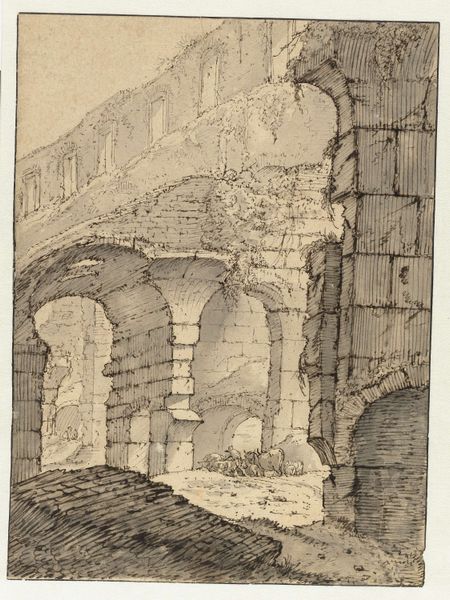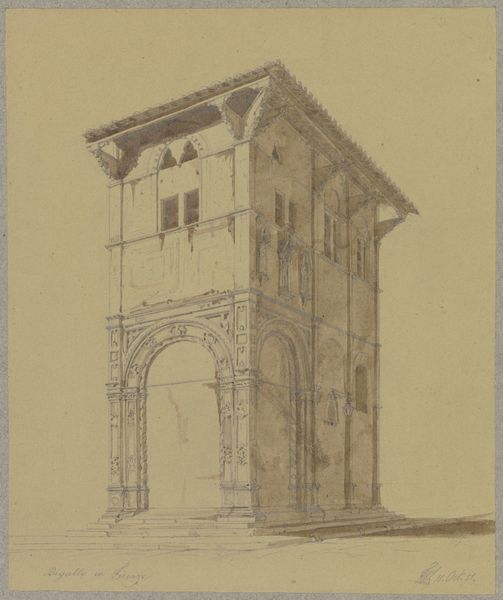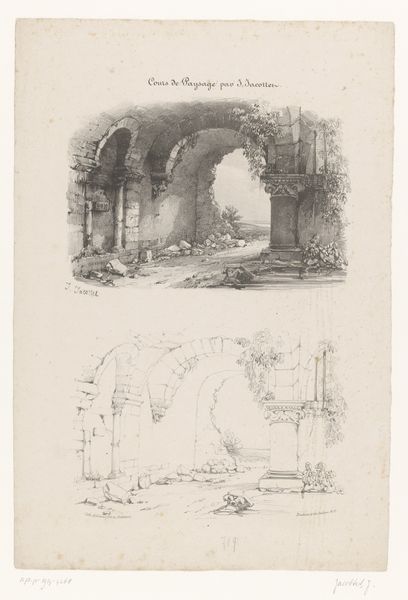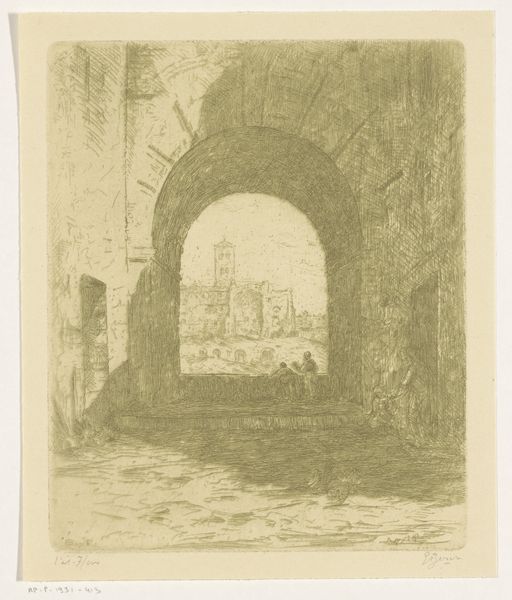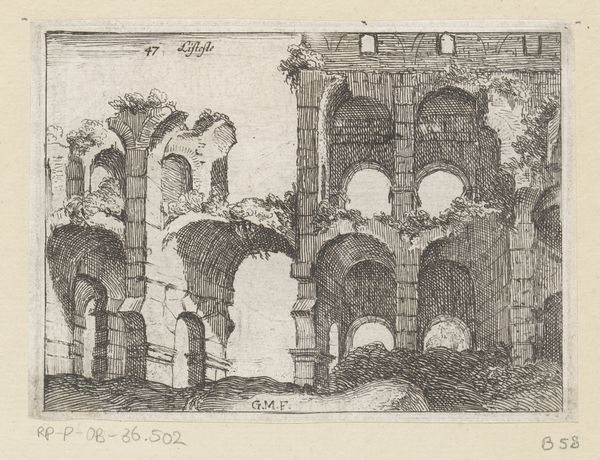
drawing, tempera, watercolor, architecture
#
drawing
#
baroque
#
tempera
#
landscape
#
watercolor
#
watercolor
#
architecture
Dimensions: 10 1/4 x 7 1/2 in. (26.04 x 19.05 cm) (sheet)
Copyright: Public Domain
Editor: This is "Roman Arch," a tempera, watercolor, and ink drawing by Johann Heinrich Roos, created sometime between 1650 and 1654. It feels very somber to me, with the muted grey washes and depiction of a crumbling ruin. What strikes you when you look at this piece? Curator: What immediately comes to mind is the socio-political commentary embedded within what appears to be a simple architectural study. Ruins, especially Roman ones, weren't just picturesque backdrops in the 17th century. They were potent symbols. What power dynamics do you think are at play when an artist depicts a crumbling monument to a past empire? Editor: I suppose it shows the impermanence of power, even empires fall. Was Roos perhaps commenting on contemporary political structures through the lens of the Roman Empire's decline? Curator: Exactly! Consider the context: The Thirty Years' War had just ravaged Europe, and the concept of divinely ordained authority was being questioned. Roos, by depicting a decaying arch, might be subtly critiquing existing power structures, reminding viewers that no regime, no matter how grand, is immune to decay. How does the choice of medium—the delicate watercolor and tempera—further inform this commentary, in your opinion? Editor: The fragility of the materials almost emphasizes the ruin's vulnerability, compared to if it was an oil painting. Curator: Precisely! Furthermore, the choice to depict the arch as a ruin allows for reflections on colonialism and cultural appropriation inherent in European art traditions that celebrate classical antiquity while often erasing or misrepresenting the cultures they represent. What do we risk romanticizing when focusing on grand ruins like this? Editor: That's a really interesting point I hadn’t considered, it’s like…we admire the aesthetics without interrogating the social costs of the empire it once represented. Thanks for making me see this in a totally new way. Curator: Absolutely, seeing art as part of broader political and cultural dialogues empowers us to critically assess both history and the present.
Comments
No comments
Be the first to comment and join the conversation on the ultimate creative platform.

